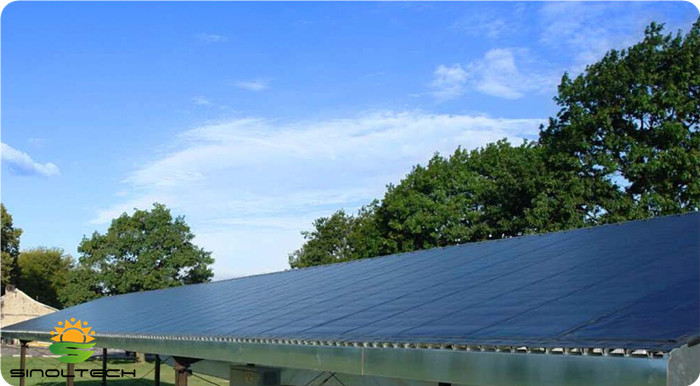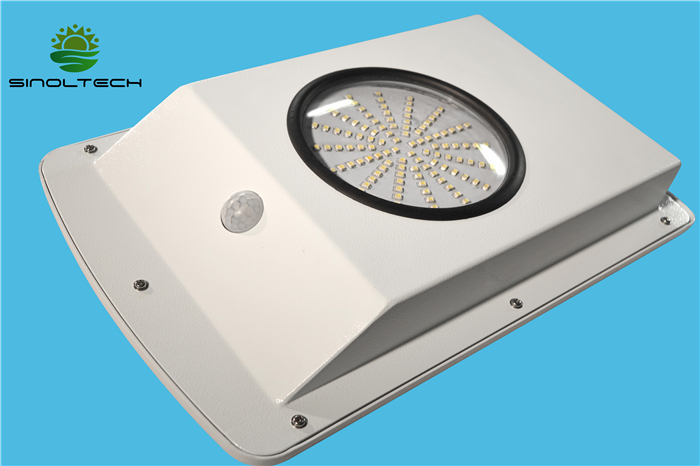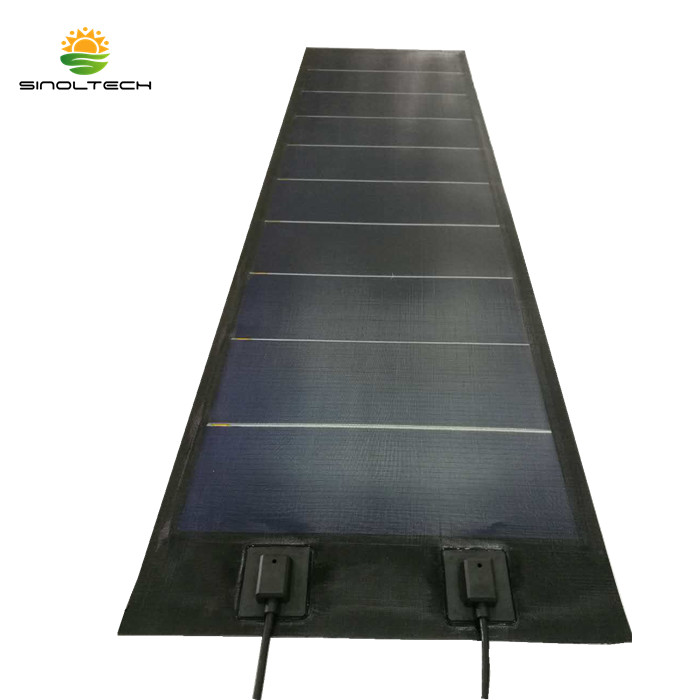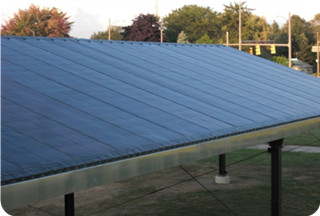Flexible Solar PV for Carport
The installation of solar (photovoltaic or PV) carports on both private- and public-owned parking lots
provides a new and cost-effective opportunity for generating clean, renewable energy without consuming
additional land resources. Solar PV carports can provide far more power generation area compared to the
more limited rooftop surface commonly used for many solar installations.
Parking lots, in general, have more solar potential and less shading issues than rooftop solar and can be
easier to install than rooftop solar installations and be less disruptive to the facility.
Two additional advantages to mounting solar on carports versus roof-mounted solar arrays include no roof penetrations, which increase exposure to potential water leaks, and the ability to avoid additional roof inspection or engineering and repair costs regarding the age, service life and integrity of the building's roof.
Solar PV parking canopies offer the parking lot owner and the environment considerable value:
1. Highly desirable shade for parked cars.
2. Rain and snow protection
3. Protection from hail damage
4. Reduced UV exposure
5. Reduced parking lot temperatures and heat island effect
6. Low-cost renewable power generation
7. Low power distribution and energy transmission cost for the utilities.
8. Improved municipal energy independence


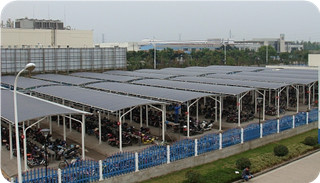
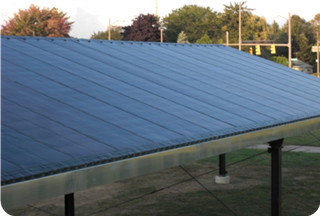
Lightweight Flexible Solar vs. Glass:
Traditionally most solar carports use conventional heavy glass crystalline solar modules installed on rails over
large heavy gauge structural steel building components requiring large support columns with deep concrete
piers or large ballast blocks. Even carports designed and built using architectural metal panels require
additional heavy gauge structural steel, railing and roof clamps, all adding weight and cost to the solar carport.
Sinoltech thin film flexible modules offer the same high efficiency power output as standard crystalline
modules while weighing less than 0.7 lb/sf vs the 3-5 lbs. /sf for crystalline modules.
The lighter weight of the flexible solar modules means less structural steel is required in the carport design,
which means less cost and faster construction time. Solar carports constructed with the flexible solar module
can use light-gauge roll-formed steel, which allows the support columns to be placed further apart, creating a
more open design.
Good wind and seismic performance engineering is important to carport design. With traditional glass
modules, there is concern about the stresses of wind and seismic movement. In addition, purlins can sag
when support columns are placed far apart, impacting glass module and rail attachment. Architectural metal
panels with flexible solar modules provide stiffer support surfaces, can span wider distances, and are
engineered for good wind and seismic performance while using lighter structural support.
Installing Solar Modules onto Existing Carports
Many facility owners have existing carports without solar. Owners often want to retrofit these existing carports,
only to realize that the original design and construction will not support the additional weight of convention
crystalline modules. Until now, the only option was to tear down the existing carport structure and to design
and rebuild the carport to support conventional solar.
SINOLTECH flexible and lightweight thin-film solar modules can be installed over existing carports
constructed with architectural metal panels and some square rib corrugated metal panels without affecting
the current weight limitation design. On carports with non-compatible metal panel profiles, these metal panels
can be removed and replaced with new architectural metal panels without having to modify the existing
support structure at a cost lower than full replacement. SINOLTECH flexible solar modules can be installed
on site, requiring fewer installers and equipment, speeding up both new construction and retrofit installations,
all at a lower cost.
